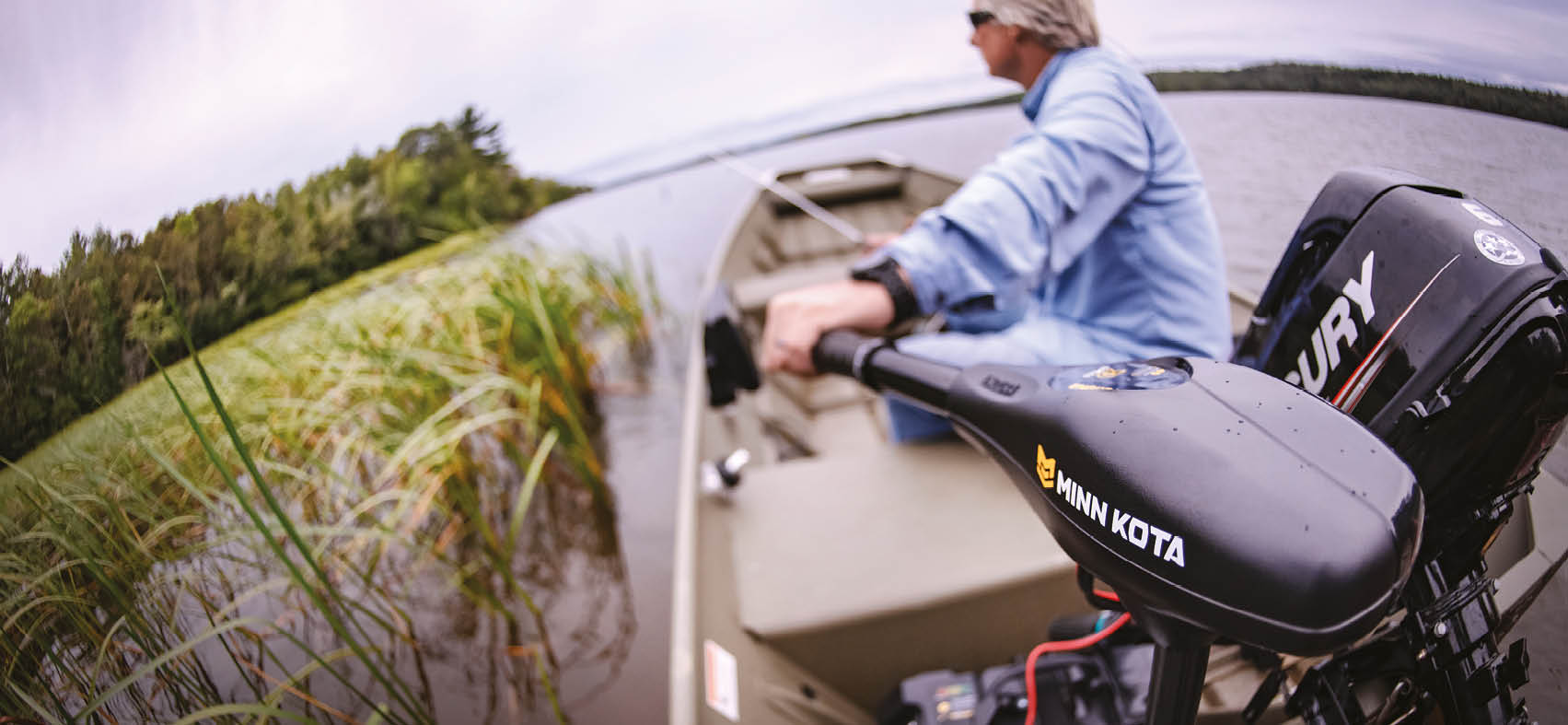The Best Gear for Walleye Fishing, as Recommended by an Expert
Fishing | August 20, 2025
SAIL
February 11, 2022

Heading out to find your favorite fishing spots or to go to a new territory to prospect is a dream! But, you need to be well equipped. For discreet and stealthy travel, consider using an electric fishing motor. To help you find your way, we’ve asked a specialist to share some valuable advice on the important things to consider before making this important purchase.
Article written in collaboration with FedeCP
In this article, you will learn how to:
Get a head start looking at the different models of electric fishing motors and batteries available at SAIL to make an informed choice.
Start by focusing on your needs. Are you looking for a motor that you can carry around in the trunk of your car to your favorite fishing spots? If so, a portable electric fishing motor that is attached to the back of the boat and pushes your boat along at a leisurely pace will be perfect for you.
Or, are you looking to increase the versatility of a boat that’s already equipped with a gas engine? If so, a bow motor is a good choice. Frequently used on sport fishing boats, electric bow motors allow for smooth micronavigation to the precise locations where you get the best results in terms of quality fishing. Note that a bow motor will be permanently attached to your boat and that it is possible to connect a sonar since the foot of the electric motor is equipped with a probe. These motors are controlled either with a joystick or a pedal to be operated with your feet. The latest developments on the market allow us to use Bluetooth technology coupled with GPS navigation system, which allows you to follow pre-programmed routes and an anchor system to facilitate the development of strategies during your fishing trips. It would be wise to consider installing an aid mechanism to facilitate the launching and removal of the motor; it is in fact an arm that allows the motor head to rotate on a given axis with ease and speed.
The reliability of electric fishing motors is well known to fishing enthusiasts. These motors are very quiet and can be a valuable ally when it’s time to get close to a coveted fishing or hunting area. Their very low environmental impact makes them a practical, intelligent and responsible choice if you are concerned about preserving the environment and ecosystems.
No matter the type of electric fishing motor you select, you have several options. Some motors offer preset speeds. They are less expensive than variable speed motors. On the other hand, they consume more energy, possibly providing less range during your days on the water. In summary, the number of functions offered by an electric motor will dictate its cost and there are several models available at different price points.
It’s worth noting that the strength of an electric motor is calculated in pounds of thrust. For example, a motor offering 30 pounds of thrust would be sufficient to move a canoe. Another interesting fact: all motors have a reverse mode.
There are different strengths and sizes of motors: strengths generally range from 30 lb. to 80 lb. (13.6 kg to 36.3 kg), and motor foot lengths from 36″ to 60″ (76 cm to 152.4 cm), depending on the model.
There are also other convenient features to consider depending on your needs and ease of navigation: telescopic handles, mounting brackets, trolling systems, speed lock systems, locking systems and more.
First of all, it is necessary to differentiate extended cycle batteries from marine “starter” type batteries used with gasoline engines.
In the category of extended cycle batteries, you will find three sub-categories: conventional batteries (lead and acid), gel batteries and lithium batteries.
It is also important to know that there are mainly three sizes of batteries, 24, 27 and 31. These numbers refer to a certain size. On average, size 24 batteries weigh around 42 lb. (19 kg), size 27 weighs close to 54 lb. (24.5 kg), while size 31 batteries weigh around 70 lb. (31.8 kg). Obviously, the larger the battery, the more energy it can store. As a reference: at maximum power, i.e. 25 ampere-hours, a 24 battery will allow you to sail for 125 minutes, a 27 battery for 175 minutes and a 31 battery for 215 minutes.
There are a few basic rules you should know. First and foremost, it is important to get a charger. It will be important to choose a long-cycle battery charger; never use a car battery charger. It is strongly recommended that you recharge your battery after each use and check the fluid level; consider refilling it with demineralized water if necessary. Battery cells that are exposed to air are prone to accumulate corrosion. You can easily find demineralized water at your local pharmacy.
If you are storing your battery for the winter, be sure to recharge it, and even find a time to do a second mid-cycle recharge if you are storing it for a long time.
All in all, the maintenance of your battery will guarantee its longevity; a well-maintained battery can last you from 3 to 5 years.